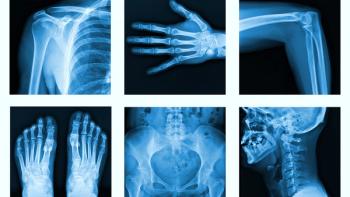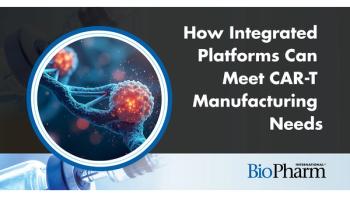
- BioPharm International-08-01-2019
- Volume 32
- Issue 8
The Moon, the Stars, and the Science Lab
Half a century after man first walked on the moon, space-based science is exploring benefits for Planet Earth.
The summer of 1969 was a watershed moment for science when, on July 20, man first walked on the Moon. The story of the Apollo 11 flight is well-known. Astronaut Neil Armstrong’s words as he stepped on to the surface, “That’s one small step for [a] man, one giant leap for mankind,” resounded around the world and became one of the most recognized quotes of a generation.
The technology used for the trip to the Moon pales in comparison to current materials, instruments, computing, and communication capabilities. The computing power in the Apollo 11 ship was less than that of an average cell phone today. The astronauts appeared ghostlike as they moved about the Moon; technology limits prevented transmission of higher resolution images.
In his 1962 “We choose to go to the Moon” speech at Rice University in Houston, President John F. Kennedy talked about the need for the nation to accelerate space exploration efforts (1). At the time, the United States was racing to catch up in a space race with the Soviet Union.
On July 20, 1969, the US crossed the finish line first. On subsequent missions to the Moon, astronauts stayed longer and conducted more sophisticated experiments. But public interest lagged; going to the Moon was no longer an achievement. Later manned missions to the International Space Station (ISS) and unmanned missions to other corners of the universe generated valuable information but did not reach the prominence of Apollo 11. As the novelty of space exploration wore off, funding dried up. In recent years, the private sector has entered the race for the commercialization of space.
Space exploration, however, generated scientific benefits and practical applications beyond the spectacle of the Moon walks. A less-publicized statement in Kennedy’s 1962 speech described the prospects: “The growth of our science and education will be enriched by new knowledge of our universe and environment, by new techniques of learning and mapping and observation, by new tools and computers for industry, medicine, the home as well as the school,” he said.
The ISS, an orbiting laboratory 248 miles above Earth, functions as “an unparalleled opportunity to investigate how gravity and the extreme environment of space influence observations in the physical and life sciences-exploiting these effects to understand basic phenomena and advance commercial pursuits” (2).
The ISS website describes how studies of the effects of spaceflight on living organisms will enable scientists to learn more about biology, medicine, and biotechnology and, in turn, advance pharmaceutical development. The laboratory also has unique features not found on Earth. Microgravity causes changes in gene expression, DNA regulation, cellular function and physiology, and 3D aggregation of cells. It also affects fluid dynamics, allowing improved growth of protein crystals and optimization of nanofluidics systems (3). Implementation partners serve as payload developers, preparing research studies for deployment in space.
Life-sciences experiments conducted on the ISS include protein crystallization studies to improve drug design; cell culture experiments to study osteoporosis and immunodeficiency; stem cell experiments for cardiovascular disease; fluid dynamics studies for diagnostics and drug delivery systems; and model-organism research to explore potential repurposing of existing drugs for other uses.
The journey to the Moon demonstrated man’s capabilities to innovate. The ongoing benefits of an orbiting research lab are a testimony to that legacy.
References
1. NASA,
2. ISS,
3. ISS,
Article Details
BioPharm International
Vol. 32, No. 8
August 2019
Page: 6
Citation
When referring to this article, please cite it as R. Peters, “The Moon, the Stars, and the Science Lab," BioPharm International 32 (8) 2019.
Articles in this issue
over 6 years ago
Monitoring and Control of Inline Dilution Processesover 6 years ago
FDA Maps Strategies to Advance Cell and Gene Therapiesover 6 years ago
Gene-Editing Techniques Target New Applicationsover 6 years ago
Quality Risk Management Plans Create Effective Quality Systemsover 6 years ago
Best Practices in the QC Micro Laboratoryover 6 years ago
Enhancing Cell Harvestover 6 years ago
The Case for Stainless Steelover 6 years ago
Orchestrating Success in Clinical Trial Manufacturingover 6 years ago
Industrializing Cell and Gene TherapiesNewsletter
Stay at the forefront of biopharmaceutical innovation—subscribe to BioPharm International for expert insights on drug development, manufacturing, compliance, and more.




